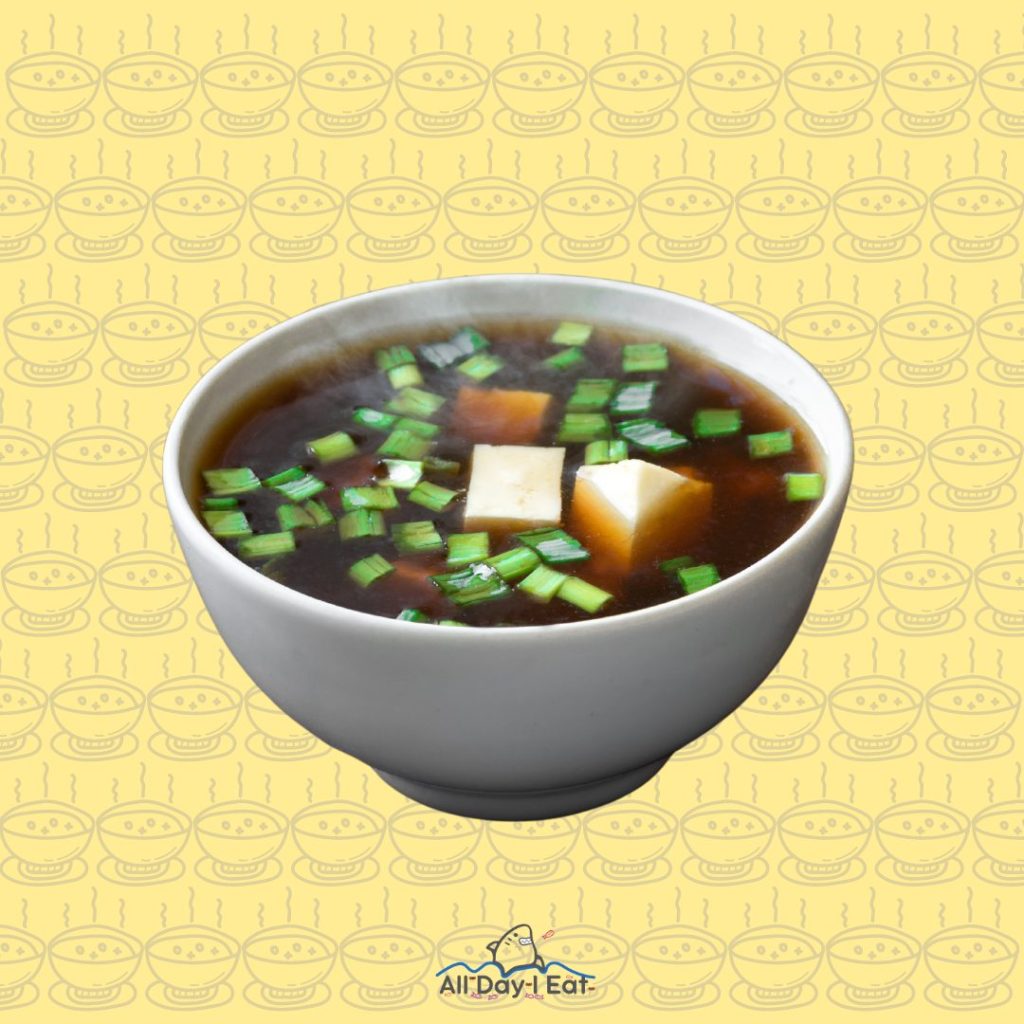Are you wondering if you can safely reheat miso soup? Look no further!
This article will explore the science behind reheating miso soup and provide the best practices to ensure a delicious and safe meal. We will also discuss common mistakes to avoid and share tips for storing and reheating miso soup.
Whether you’re a seasoned chef or just starting in the kitchen, we’ve covered you with delicious recipes using reheated miso soup.
Let’s dive in!
Key Takeaways

- If you reheat miso soup, nutrients in a reheated miso soup may break down and lose nutritional value.
- Heat exposure leads to the breakdown of enzymes responsible for health benefits.
- Reheating miso soup can cause proteins to denature, affecting texture and taste.
- Best practices you should adopt when you reheat miso soup include using low heat, avoiding boiling, adding fresh ingredients after reheating, and stirring gently to ensure proper incorporation of miso paste.
The Science Behind Reheating Miso Soup

When you decide to reheat miso soup, know that reheating it can cause the nutrients to break down and lose their nutritional value, impacting its overall quality and health benefits.
Heat exposure can lead to the breakdown of enzymes present in miso, which are responsible for various health benefits such as aiding digestion and boosting immune function. Additionally, reheating miso soup can cause the denaturation of proteins in the ingredients, changing texture and potentially affecting taste.
Although reheating miso soup may alter its nutrient content, it still retains some health benefits, like providing probiotics and antioxidants.
However, consuming a freshly made miso soup maximizes its nutritional value and preserves its natural flavors.
Best Practices for Reheating Miso Soup

You should follow the best practices before you reheat miso soup to maintain its flavor and texture. Remember that miso soup is a delicate dish and can easily lose its original taste if not reheated properly.
Here are some tips to help you preserve the miso flavor:
Use low heat
Low heat is important when you reheat miso soup to prevent the ingredients from overcooking and losing flavor.
Avoid boiling
Boiling miso soup can cause the miso paste to break and become grainy. Instead, gently warm it until it reaches your desired temperature.
Add fresh ingredients
To enhance the flavor when you reheat miso soup, consider adding fresh ingredients such as scallions or tofu after reheating the soup.
Stir gently
To ensure the miso paste is well incorporated into the soup, stir gently while reheating.
Common Mistakes to Avoid When You Reheat Miso Soup

When you reheat miso soup, use low heat to avoid overcooking the ingredients and losing flavor. As we have mentioned earlier, reheating miso soup quickly can result in a loss of flavor and changes in texture. So, to preserve its delicate and complex flavors, it is important to reheat miso soup slowly and gently.
Here are some common mistakes to avoid when reheating miso soup:
Using high heat
High heat can cause the miso paste to break down and lose flavor. It can also lead to overcooking other ingredients, resulting in a mushy texture.
Reheating for too long
Overheating miso soup for an extended period can lead to a decrease in flavor intensity. It is best to reheat only until warm rather than boiling or simmering for an extended time.
Stirring vigorously
Vigorous stirring while you reheat miso soup can cause the miso paste to separate from the broth, resulting in an uneven flavor distribution. To ensure that it retains its delicious taste, take your time and reheat it gently on low heat.
| Mistake | Explanation | Solution |
|---|---|---|
| Using high heat | High heat causes loss of flavor and overcooking | Use low heat instead |
| Reheating for too long | Extended heating decreases flavor intensity | Reheat only until warm |
| Stirring vigorously | Vigorous stirring separates miso paste from broth | Stir gently or avoid stirring |
Tips for Storing and Reheating Miso Soup

For optimal results, store leftover miso soup in an airtight container in the refrigerator. This will help preserve its flavor and ensure it remains safe to consume.
Here are some tips for storing and reheating miso soup:
Use an airtight container
This will prevent any odors from seeping into the soup and keep it fresh.
Store in the refrigerator
Miso soup should be stored below 40°F (4°C) to inhibit bacterial growth.
Consume within 3-4 days
Miso soup is best when consumed fresh, so try to eat it within a few days of making or purchasing it.

Konnichiwa! (Hello!) I'm Pat Tokuyama, a Japanese tofu cookbook author, who travels for music, food, and adventure. If you like Japanese tea, checkout some of the newestorganic japanese tea, matcha bowls and noren and more!
** Curious about the Plant Based Japanese Cooking Club? ** Learn more here!
Reheat gently
To preserve the delicate flavors of miso, reheat it slowly over low heat. Avoid boiling or microwaving, as this can alter its taste.
Delicious Recipes Using Reheated Miso Soup

Miso soup is a comforting and traditional Japanese dish with numerous health benefits. You can add reheated miso soup to your favorite noodle dish for a delicious and flavorful twist.
Reheating miso soup can enhance its flavors, making it an excellent addition to various recipes such as:
- One delightful variation is miso ramen, where you can combine the umami richness of miso soup with the hearty goodness of noodles.
- Another option is using reheated miso soup as a base for stir-fried vegetables or as a marinade for grilled tofu or meat.
The benefits of miso soup include being rich in probiotics that promote gut health, containing essential amino acids, and being low in calories while providing vitamins and minerals like vitamin K and manganese.
Conclusion
Reheating miso soup is safe and can enhance its flavors. The science behind reheating miso soup lies in preserving its nutrients and maintaining its delicate balance of flavors.
Following best practices, such as gentle heat and avoiding prolonged heating, ensure your reheated miso soup remains delicious and nutritious.
Remember to store any leftover miso soup properly to maintain its quality for future reheating.








Konnichiwa! (Hello!) I'm Pat Tokuyama, a Japanese tofu cookbook author, who travels for music, food, and adventure. If you like Japanese tea, checkout some of the newestorganic japanese tea, matcha bowls and noren and more!
** Curious about the Plant Based Japanese Cooking Club? ** Learn more here!